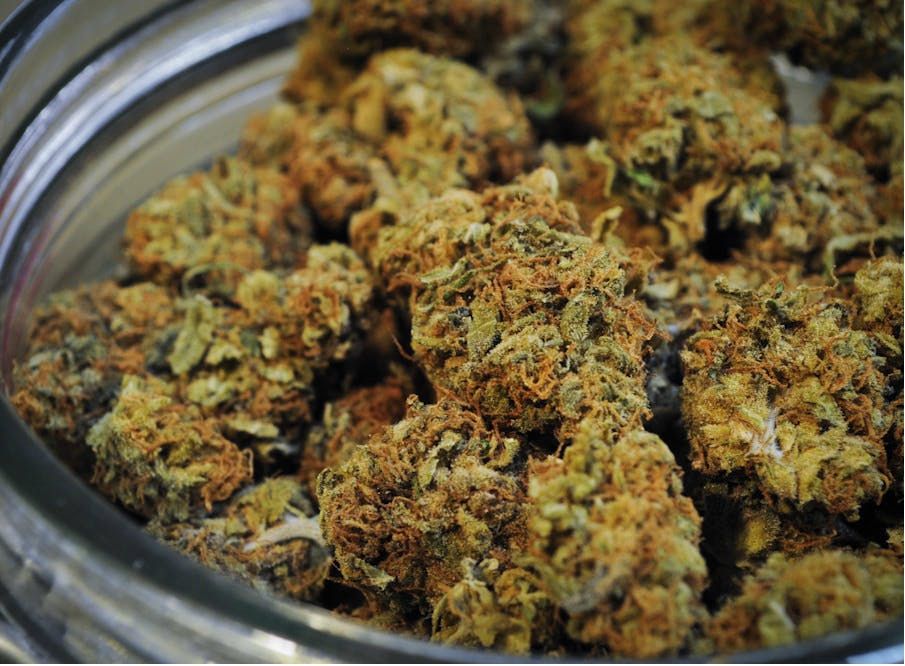Cannabis is an extremely safe medicine. Unlike most pharmaceutical options, cannabis is virtually impossible to overdose on—some researchers suggest you’d need to smoke the equivalent of 20,000 to 30,000 joints in one sitting to reach toxic levels in your blood.
Despite the high level of safety associated with cannabis, poor practices on the part of cultivators, product manufacturers or dispensaries could introduce potential health risks. When marijuana isn’t handled properly, it can become tainted with contaminants like mold, bacteria, pesticides or chemical solvents. These dangerous contaminants could put your health at risk. In this article, part of a series geared towards folks new to cannabis, we’ll go over what you need to watch out for and how to select cannabis products that will heal instead of harm.
FOLLOW US ON FACEBOOK & INSTAGRAM
Check Marijuana for Pesticides
One of the biggest health concerns for the cannabis industry is the presence of pesticides in the products being sold to patients. Most agricultural activity is kept in check by EPA-enforced pesticide regulations that limit the types of pesticides (and the amount of pesticide residue) legally allowed on crops intended for human consumption. Because cannabis is a Schedule 1 substance, it hasn’t been put through the same regulatory process.
Technically, all pesticides remain unapproved for use when growing marijuana. This means that cannabis cultivators are left with little guidance about what types or amount of pesticides are appropriate for their crop. Unfortunately, cannabis crops are just as vulnerable to pests as any other type of agriculture, so most large-scale operations require some type of pest control. Some choose poorly and decide to use chemicals that have known toxic properties for humans.
While some states have adopted their own regulations about what pesticides are allowed and which require testing, others don’t have any regulations at all. It’s crucial that patients learn about the regulations in their state, and then find ways to fill in the gaps with vigilant purchasing practices to ensure their own safety.
When it comes to pesticides, there’s no good substitute for actual test results. Because pesticides are difficult (if not impossible) to detect with any natural senses, lab testing is a must. Make sure that any cannabis you purchase has been tested by a reputable lab. Many dispensaries have lab results available for patients to view while they’re browsing. If they don’t, find a dispensary that does. It’s not worth the risk.
RELATED: PESTICIDES IN MARIJUANA: SHOULD YOU BE WORRIED?
Make Sure Marijuana’s Free of Mold & Bacteria
Another source of concern for cannabis consumers is the risk of mold and bacteria living on cannabis flowers. A study by UC Davis looked at the microbacterial material left on cannabis from dispensaries in Northern California. Researchers found that every single sample was contaminated with potentially dangerous bacterial or fungal pathogens. While these pathogens wouldn’t be that dangerous to the average cannabis user, they could be extremely harmful for those individuals with compromised immune systems.
Sometimes, it’s possible to spot or smell mold in cannabis. Watch out for cannabis that looks like it’s covered with white powder. It can be easy to mistake powdery mildew for trichomes, as some mold can resemble the THC crystals that coat high-quality cannabis. However, you can distinguish between the two using a black light. Mold spores will take on a green hue in this special lighting. Mold can also appear as white or gray fuzz, or as spots with unusual coloring. Mold may also give off a sweet, musty or stale aroma.
That said, mold and bacteria aren’t always detectable with the naked eye. It’s still vitally important to make sure that your products have gone through lab testing. As you would with pesticide tests, you should ask to see the test results for mold and bacteria before you purchase any cannabis product.
Beware of Chemical Solvents in Cannabis
If you use cannabis concentrates like hash, wax, shatter or dabs, or products like edibles, tinctures or topicals (which might contain cannabis concentrates), you also need to be aware of the risk from chemical solvents. Some concentrates are processed with chemical solvents such as butane, which have known health risks when consumed. When properly processed, these solvents can be removed from the final product, but not all extract makers are able pull this off. In states without regulated testing, this can mean that concentrates contaminated with dangerous chemical solvents are being sold directly to patients.
One way to avoid this risk is to opt for extracts produced using solvent-free methods. Water hash and rosin are two options that don’t introduce any toxic chemicals into the equation, so you can feel confident that you aren’t ingesting solvents.
Unfortunately, in unregulated markets, it’s still possible for manufacturers to market products as solvent-free even though they were actually made using solvents. For this reason, it’s important to get test results for any cannabis concentrates you purchase as well as for any edibles, tinctures, topicals, cartridges or capsules, as they might contain a concentrate as well.
Lab-Tested Cannabis Is Key
If you’re using cannabis, you’ll want to watch out for mold, bacteria, solvents and pesticides. The most important thing to remember is that lab testing is the only real way to know whether your cannabis is contaminated. Play it safe and make sure you see those test results before you consume a marijuana product.
Once you’ve found clean lab-tested products, be sure to keep your cannabis clean. Poor storage practices can lead to mold and bacteria on products that were clean when you purchased them. In the next installment of our Cannabis for Newbies guide, we’ll share some tips on how to make sure you’re storing your cannabis properly.
Photo credit: Dank Depot
Need a medical marijuana recommendation? Consult with one HelloMD’s knowledgeable doctors; it’s easy, private and 100% online.






